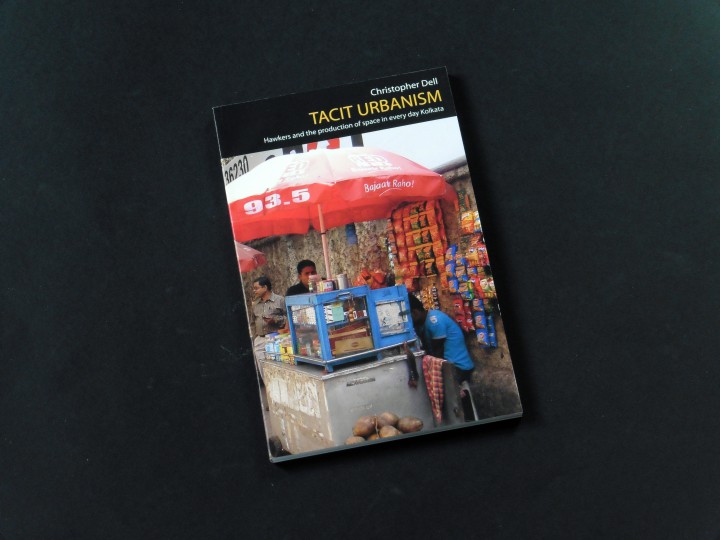Exhibition Jugaad Urbanism
with the book “Tacit Urbanism” and the installation movie “Kolkata Monodosis” I participated in
Center for Architecture New York first exhibition in US on contemporary Indian urbanism
Exhibition on view in New York February 10 – May 21, 2011
Center for Architecture, 536 LaGuardia Place, NYC 10012

Jugaad: a definition
There is no one definition of the Hindi term “jugaad,” but in a broad sense, the term refers to a
certain resourcefulness and innovation found in Indian cities. Jerry-rigged cars, homemade stoves,
and do-it-yourself water filtration are all examples of citizens “making do” with what they have on
hand. That resourcefulness has proven to be an inspiration for local nongovernmental organizations
and international designers alike. The exhibition juxtaposes these homemade solutions and the
“designed” ones, showing how the two can build off of one another to improve city life. As curator
Kanu Agrawal describes, “Jugaad strategies allow designers to work with maximum adaptability
and imagination. Inspired by the skill and ingenuity of grassroots tactics as well as a careful use of
meager resources, designers can be thoughtful contributors for healthier, safer, and more equitable
cities. With their organizational skills and expertise they can provide examined ways of improving
living conditions.”
Exhibition Content
The exhibition is organized by “resource:” land, water, energy and transportation.
• The land section will feature a proposal for “In-between Architecture” by Studio Mumbai, an
Incremental Housing Strategy for Pune by Urban Nouveau and the NGO SPARC, the
Cybermohollah HUB community center planned for a slum resettlement in Delhi, and an
investigation of the chawls in Mumbai. These buildings, 2-5 story housing structures, built in
the early 20th century around the fabric mills of Mumbai, are at the center of a debate about
preservation and development in Indian cities. The commissioned proposal by Neera
Adarka and Rupali Gupte will save the chawls, but modernize them for contemporary life.
• The water section will also feature a commissioned project—a new scheme for community
toilets in Delhi by Vir.Mueller Architects, including an example of his innovative low tech
ceramic toilet pan—and an assortment of water filtration solutions, including a “jugaad” 3-
bucket solution, and a mass-manufactured design by the Tulip Water Foundation.
• The energy section will display solar solutions, including a solar-powered streetlamp and
portable home light, and a set of smokeless stoves. It will also include an energy-generating
e-charka, or spinning machine, which is a symbol of empowerment recalling the iconic photo
of Gandhi and his charka, spread around the world by Life magazine.
• The transportation section will present the typical “jugaad vehicle” alongside the innovative,
constraint-based design of the Tata Nano. Additional materials include a photo essay on the
new skywalks of Mumbai, a presentation of drawings and photos of the Janmarg Bus Rapid
Transit system in Ahmedabad, developed with the Institute for Transportation and
Development Policy, and the Soleckshaw, a solar-powered rickshaw.
• Additionally, the Center will host an installation by the noted Delhi-based artist group Raqs
Media Collective, called “Coordinates of an Everyday City.” The 4-channel video installation
was first shown at Documenta 11 in Kassel, Germany. Raqs co-founded Sarai, Centre for
the Study of Developing Societies, in 2000, and is renowned in the art world for its
multimedia projects.
In total, the exhibition features products/prototypes, models, videos, photography, and drawings
created by Indian artists, designers and NGOs, but also the designs of practitioners working in India
that are based in Sweden, Germany, and New York. “In place of the master plan and tabula rasa
urbanism, Jugaad urbanism takes the improvised, actually existing urban conditions of the Indian
metropolis as a point of departure to consider the scale and scope of new design interventions,”
says Vyjayanthi Rao of the New School for Social Research. “This exhibition raises questions about
the nature of innovation itself and the systems that support intervention.”